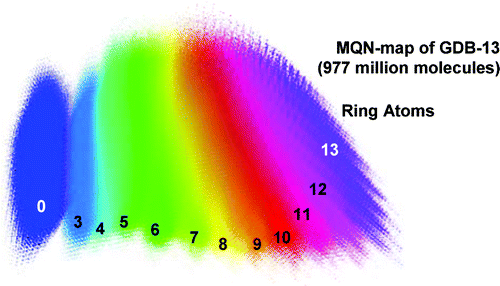1 million billion billion billion billion billion billion: Number of undiscovered drugs

occupied not by stars and planets but substances that could become useful in everyday life – has concluded that scientists have synthesized barely one tenth of 1 percent of the potential medicines that could be made. The report, in the journal ACS Chemical Neuroscience, estimates that the actual number of these so-called "small molecules" could be 1 novemdecillion (that's 1 with 60 zeroes), 1 million billion billion billion billion billion billion, which is more than some estimates of the number of stars in the universe.
Jean-Louis Reymond and Mahendra Awale explain that small molecules, which are able to cross cell walls and interact with biological molecules in the body, are prime targets for scientists who develop new medicines. Most existing medications are small molecules. The authors focused on the "chemical space" inhabited by all of the small molecules that could possibly exist according to the laws of physics and chemistry. Researchers have identified millions of these compounds – the ACS' Chemical Abstracts Service database contains almost 67 million substances. Reymond and Awale estimate that the molecules synthesized and tested as potential drugs so far represent less than 0.1 percent of chemical space. To aid researchers looking for new ways to prevent and treat disease, they set out to find the best ways to search for new small molecules.
The authors discuss several ways of getting a handle on chemical space, including by the size, shape and makeup of molecules. They show how computers can help researchers efficiently narrow a search for a new drug candidate. Computer modeling of chemical interactions can help researchers find a handful of promising molecules to synthesize and test in the lab. "Small molecule drugs are essential to the success of modern medicine," the authors note, and suggest that their methods may be particularly useful for finding new pharmaceuticals that target the central nervous system.
More information: “Exploring Chemical Space for Drug Discovery Using the Chemical Universe Database” ACS Chem. Neurosci., Article ASAP. DOI: 10.1021/cn3000422
Abstract
Herein we review our recent efforts in searching for bioactive ligands by enumeration and virtual screening of the unknown chemical space of small molecules. Enumeration from first principles shows that almost all small molecules (>99.9%) have never been synthesized and are still available to be prepared and tested. We discuss open access sources of molecules, the classification and representation of chemical space using molecular quantum numbers (MQN), its exhaustive enumeration in form of the chemical universe generated databases (GDB), and examples of using these databases for prospective drug discovery. MQN-searchable GDB, PubChem, and DrugBank are freely accessible at www.gdb.unibe.ch
Journal information: ACS Chemical Neuroscience
Provided by American Chemical Society


















